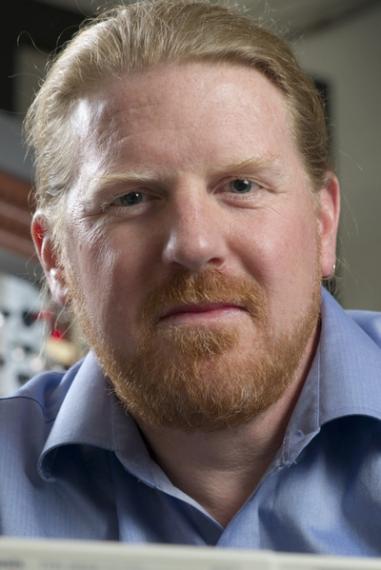Carl Svensson

Instrumentation/Capabilities
Dr. Carl Svensson’s research is performed with state-of-the-art multi-detector arrays of high-purity germanium (HPGe) crystals to detect the energetic light, or gamma-rays, emitted by the atomic nucleus. These detection systems include the TRIUMF-ISAC Gamma-Ray Escape Suppressed Spectrometer (TIGRESS), which was constructed through an $8M grant received from the Natural Sciences and Engineering Research Council of Canada (NSERC) in 2003. Svensson is also the Project Leader for Gamma−Ray Infrastructure For Fundamental Investigations of Nuclei (GRIFFIN), an advanced new high−efficiency $12.5 M gamma-ray spectrometer funded jointly by the Canada Foundation for Innovation (CFI), the Ontario Ministry of Research, Innovation and Science (MRIS), the British Columbia Knowledge Development Fund (BCKDF), TRIUMF and the University of Guelph. His group, together with national and international collaborators, operate these large gamma-ray spectrometers at the Isotope Separator and Accelerator (ISAC) radioactive ion beam facility at the TRIUMF laboratory in Vancouver, the world’s highest power on-line isotope separator facility. Analysis of the data from these experiments is carried out in-house at the University of Guelph.
Education and Employment Background
Svensson received his PhD in Physics from McMaster University in 1998. In 1999-2000, he worked as a Postdoctoral Fellow at Lawrence Berkeley National Laboratory in Berkeley, California. He joined the University of Guelph’s Department of Physics in 2001, where he is now a full Professor and holds a Research Chair in Gamma-Ray Spectroscopy and Rare Isotope Physics jointly funded by TRIUMF, Canada’s national particle accelerator centre.
Research Themes
Svensson’s research uses the atomic nucleus as a laboratory for studying a variety of physics topics, ranging from the microscopic description of collective excitation modes in finite quantum systems, to precision tests of the electroweak Standard Model of particle physics and the search for new physics beyond it. His recent and current research activities include:
- Studies of the evolution of nuclear shell structure in rare isotopes through decay and in-beam gamma-ray spectroscopy at ISAC. These measurements provide new insights into the behaviour of the complex nuclear quantum many-body system and deepen our understanding of the processes by which the chemical elements have been, and continue to be, synthesized in explosions of ancient stars.
- High-precision lifetime and branching ratio measurements for a special class of nuclear transformations known as superallowed Fermi beta decays. These measurements improve our knowledge of the breaking of an approximate symmetry of the strong nuclear force known as isospin caused by Coulomb and charge-dependent forces in the nucleus. They thus provide demanding tests of our current understanding of the fundamental interactions of the basic building block of nature embodied in the Standard Model of particle physics.
Highlights
- TRIUMF Research Chair in Gamma-Ray Spectroscopy and Rare Isotope Physics, 2024-present
- Tier I Canada Research Chair in Gamma-Ray Spectroscopy and Rare Isotope Physics, 2009-2023.
- E.W.R Steacie Memorial Fellowship, Natural Sciences and Engineering Research Council of Canada, 2008
- University Research Chair in Subatomic Physics, University of Guelph, 2003-2009
- Herzberg Medal, Canadian Association of Physicists, 2007
- Premier’s Research Excellence Award, Ontario Government, 2002
- John Charles Polanyi Prize in Physics, Ontario Government, 2001
Media Coverage
Awards and accolades
- Biocarbon: Ontario Government Invests $10.6 Million in U of G Research - U of G News (uoguelph.ca)
- Guelph Mercury: U of Guelph scientists receive $19.2 million for various research projects
- Farms.com: Ontario Government Invests $10.6 Million in U of G Research
- Exchange: U of G Gets $4.3 Million Via Canada Research Chairs | University of Guelph (uoguelph.ca)
Triumf
- Triumf: Triumf Family Grows